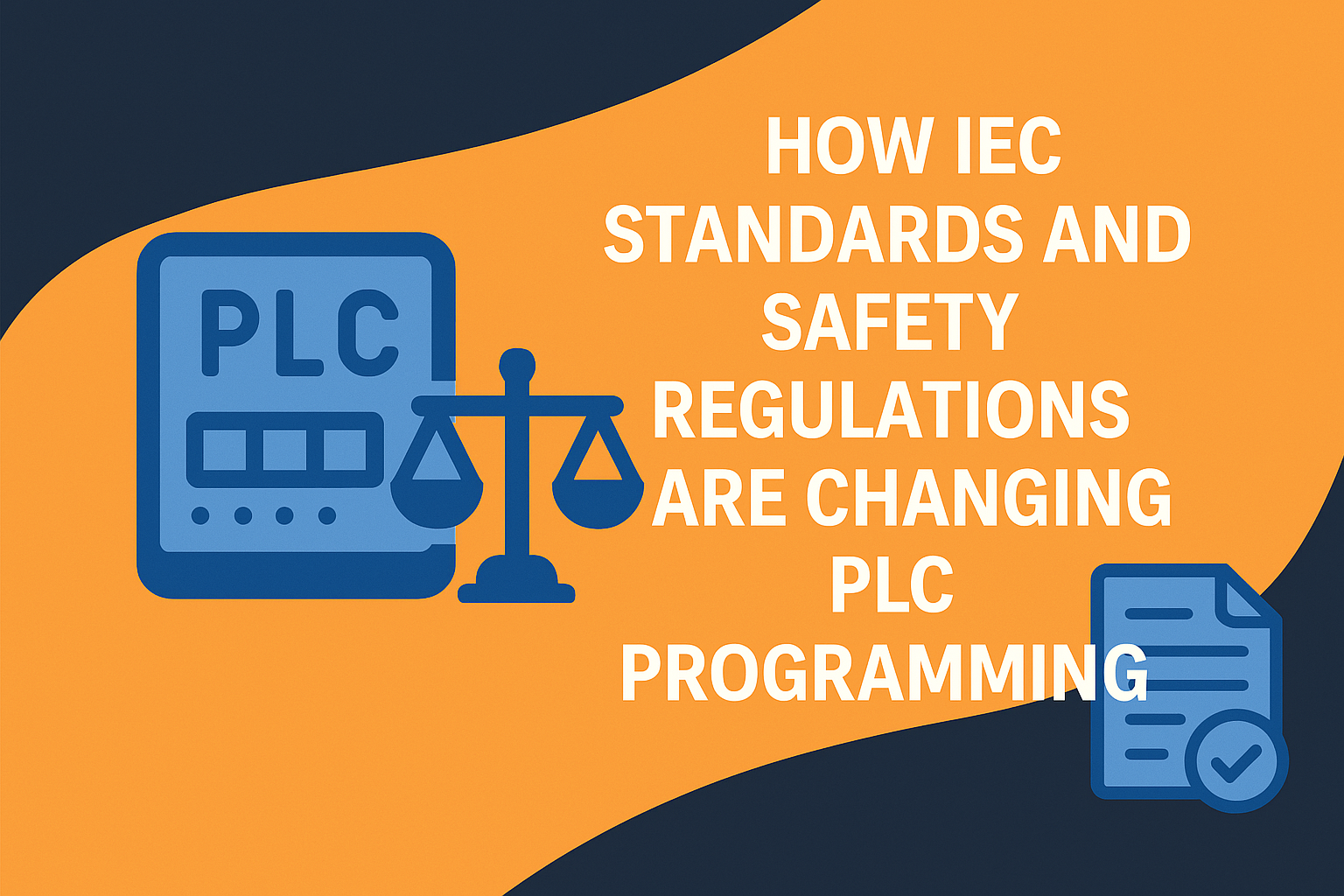
Introduction:
As automation systems become more complex and safety-critical, both international standards and local regulations are evolving to match. Engineers working with PLCs must now go beyond basic logic design — they need to be fluent in the latest IEC standards and understand how modern safety regulations influence their systems.
1. A Quick Overview of Key IEC Standards
🔹 IEC 61131-3: The Core of PLC Programming
This standard defines:
- Programming languages: Ladder Logic (LD), Structured Text (ST), Function Block Diagram (FBD), etc.
- Data types, structures, and modular programming concepts
💡 Update: The recent versions of IEC 61131-3 encourage object-oriented programming, making it easier to write reusable, scalable PLC code.
🔹 IEC 61508 / IEC 62061: Functional Safety
Focuses on:
- Designing systems that fail safely
- Establishing Safety Integrity Levels (SIL)
- Creating redundancy, diagnostics, and safe shutdown procedures
2. Why These Standards Matter Today
- More factories are moving toward Industry 4.0 and remote diagnostics
- Systems must now comply with safety regulations before commissioning
- Programmers must consider software and hardware-level protection
3. How New Safety Regulations Influence Design
Modern safety standards require:
- Certified safety PLCs and I/O modules
- Use of dedicated safety networks (e.g., PROFIsafe, Safety over EtherCAT)
- Implementation of emergency stop circuits, safety relays, light curtains, and interlocks tied directly to the PLC logic
🛑 Example: You can’t just “add an E-Stop.” It must comply with SIL/PL requirements, have diagnostic coverage, and possibly dual-channel inputs.
4. What This Means for You (as an Engineer)
You’ll need to:
✅ Choose hardware that is certified for functional safety
✅ Program with clear separation between standard and safety logic
✅ Perform risk assessments as part of your design process
✅ Document your logic to support compliance audits
5. Practical Tips Moving Forward
- Stay updated on IEC revisions and regional adoption (e.g., EU vs Africa vs USA)
- Embrace modular, reusable code (as encouraged by IEC 61131-3)
- Explore safety simulation tools or test benches to validate your logic
- Keep training — many automation vendors now offer IEC + safety certification courses
Conclusion
PLC programming is no longer just about “if-this-then-that.” It’s now about writing smart, safe, and compliant code in line with evolving international standards. Staying ahead of these changes doesn’t just protect your system — it protects your career.

Admiring the hard work you put into your site
and detailed information you present. It’s great to come
across a blog every once in a while that isn’t the same
out of date rehashed information. Great read! I’ve bookmarked your site and I’m including
your RSS feeds to my Google account.
Also visit my blog post – y2mate.com youtube downloader